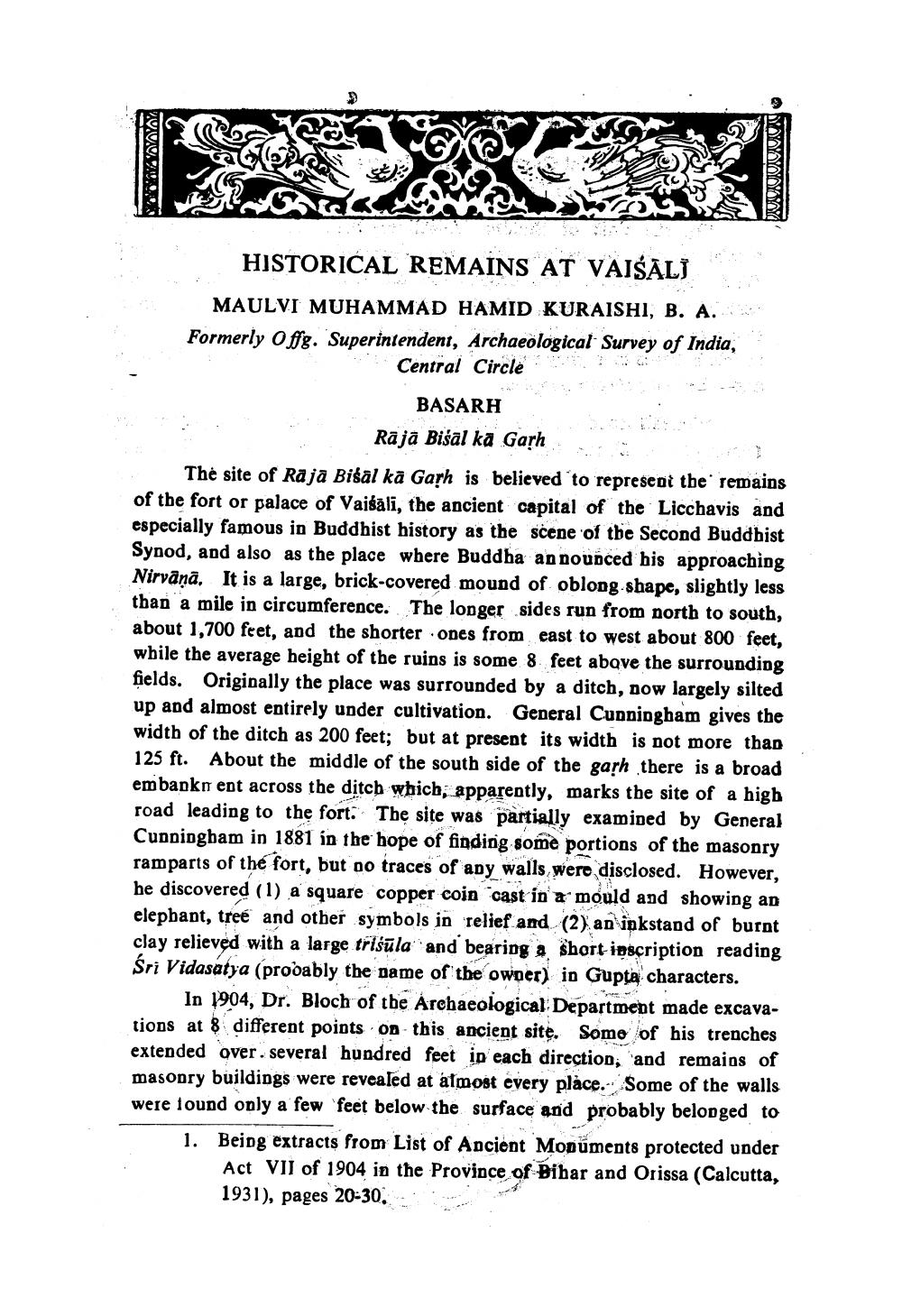________________ a. Aaah HISTORICAL REMAINS AT VAISALJ MAULVI MUHAMMAD HAMID KURAISHI, B. A. Formerly Offg. Superintendent, Archaeological Survey of India, Central Circle BASARH Ra ja Bisal ka Gash The site of Raja Bisal ka Gash is believed to represent the remains of the fort or palace of Vaisali, the ancient capital of the Licchavis and especially famous in Buddhist history as the scene of the Second Buddhist Synod, and also as the place where Buddha announced his approaching Nirvana. It is a large, brick-covered mound of oblong-shape, slightly less than a mile in circumference. The longer sides run from north to south, about 1,700 feet, and the shorter ones from east to west about 800 feet, while the average height of the ruins is some 8 feet above the surrounding fields. Originally the place was surrounded by a ditch, now largely silted up and almost entirely under cultivation. General Cunningham gives the width of the ditch as 200 feet; but at present its width is not more than 125 ft. About the middle of the south side of the gash there is a broad embapkn ent across the ditch which, apparently, marks the site of a high road leading to the fort. The site was partially examined by General Cunningham in 1881 in the hope of finding some portions of the masonry ramparts of the fort, but oo traces of any walls, were disclosed. However, he discovered (1) a square copper coin cast in a mould and showing an elepbant, tree and other symbols in relief and (2) an inkstand of burnt clay relieved with a large trisula and bearing a short inscription reading Sri Vidasatya (probably the name of the owner) in Gupta characters. In 1904, Dr. Bloch of the Archaeological Department made excavations at 8 different points on this ancient site. Some of his trenches extended over several hundred feet in each direction, and remains of masonry buildings were revealed at almost every place. Some of the walls were found only a few feet below the surface and probably belonged to 1. Being extracts from List of Ancient Monuments protected under Act VII of 1904 in the Province of Bibar and Orissa (Calcutta, 1931), pages 20-30.




